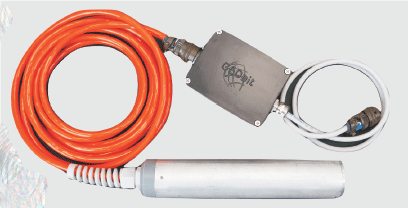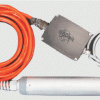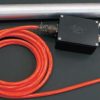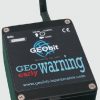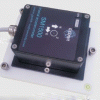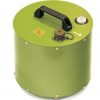The S-200 is a three-component velocity equivalent output seismic sensor.
The unit is recommended for local micro-seismicity and fracturing seismicity monitoring. Actually three versions of this sensor type are available. One without any electronics (S200A), one with preamplifier (S200B) and a third one with signal conditioner (S200C) based on the force-balance principle.
This third version provides wider sensor response 1sec to 130Hz. The main characteristic of this sensor type is the high sensitivity combined with very low noise level. It is ideal for very low seismic events or fracturing events recording. The sensor must be combined with a very low noise / high dynamic range digitizer like the SRi32L/S.
Features
- 3 axis velocity sensor
- Low power consumption Borehole /surface type
- Only 50mm diameter More than 1km depth
- Smart elastic clamping
- Guiding wheels driver
- Wide input voltage range
- Build-in test line
- Wide Response 1sec – 240Hz High
- Sensitivity 1500V/m/s
- Velocity feedback design operation Range: -20 +70C
- Micro-Seismicity Monitoring
The default cable length of the sensor is approximately 20 meters.
Selecting special cable, the length can be extended to more than one kilometer. The sensor electronics are housed inside the back box leaving the main sensor unit area free of electronics. Thus any damage risk is dramatically minimized and no reason for sensor uninstallation for repair.
The borehole type unit is housed into an 60/80mm diameter casing. The sensor body is filled with special electroinsulated resine with excellent hydrolytic stability and therefore the sensor can be installed in deep boreholes. Corroison environment is not a problem for this sensor. No mass-lock or centering is required that makes an easy connection with the digitizer.
Sensitivity is 1500V/m/sec (differentially) if electronics are used, thus providing a very sensitive seismic sensor. Recording fracturing events from the surface is not an easy experiment, almost impossible using ordinary equipment. Efforts were concetrated on minimizing the noise floor, increasing the dowhhole gain and the sensor sensitivity. This sensor uses double geophones per axis so it meets all the requirements of gain and noise levels while sensitivity becomes double.

